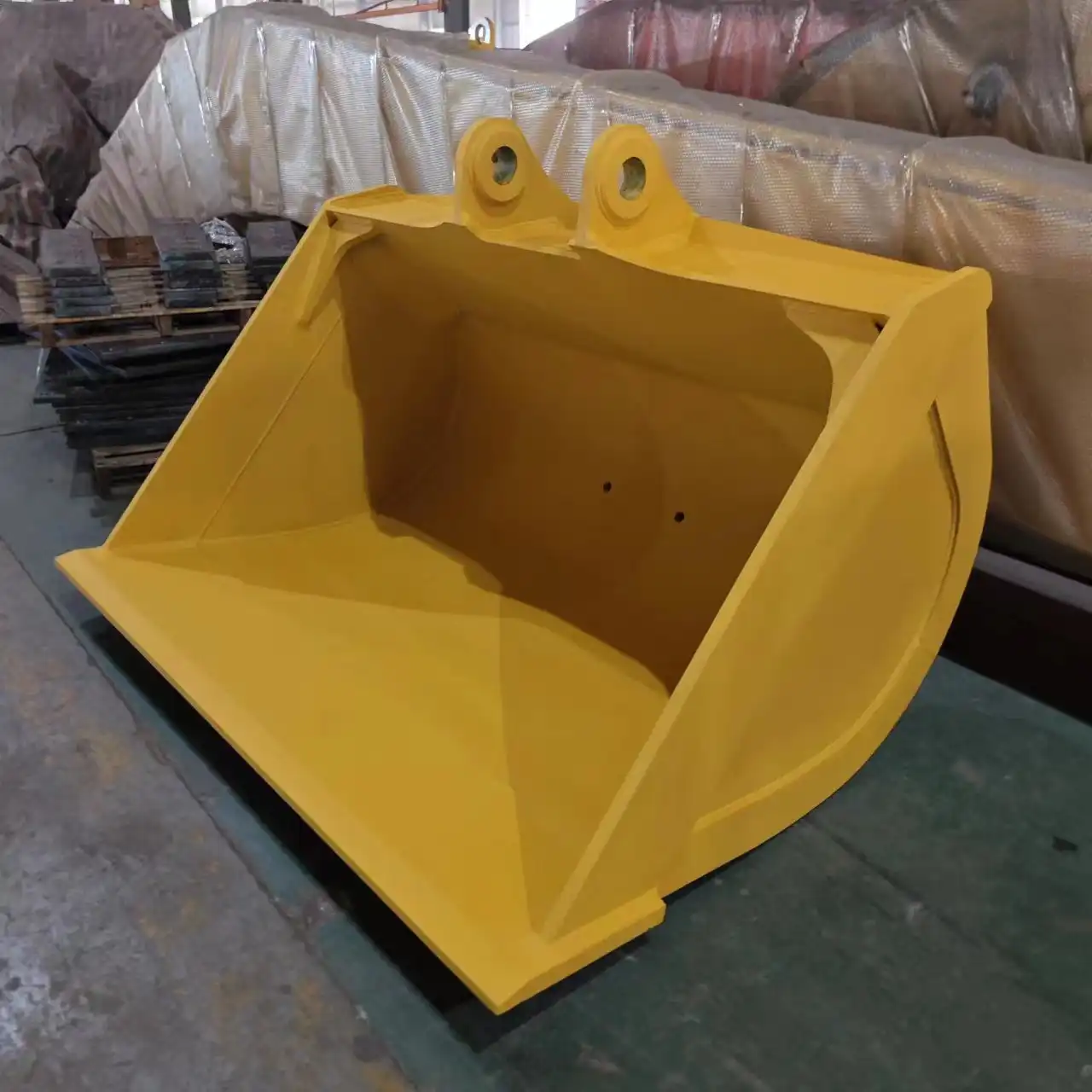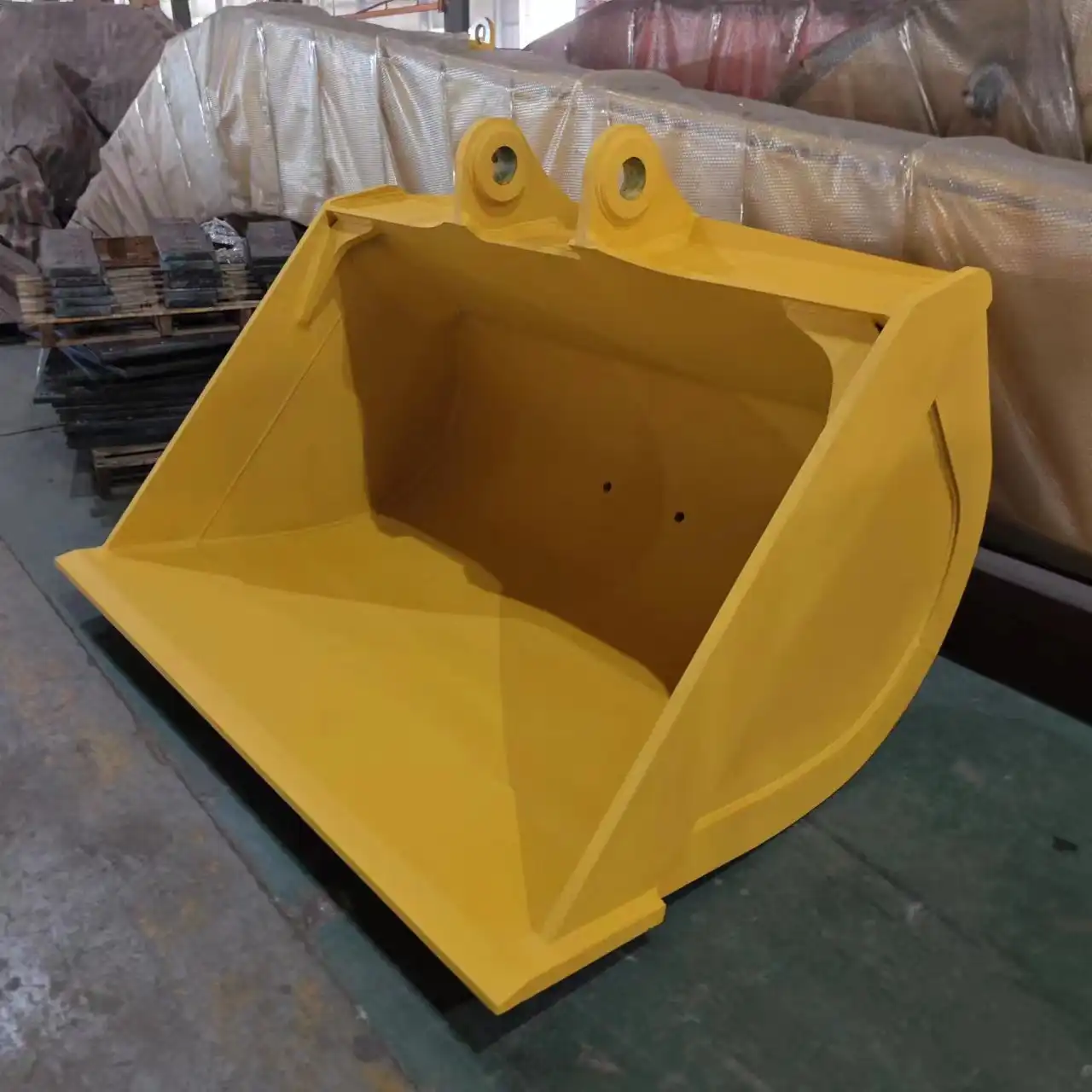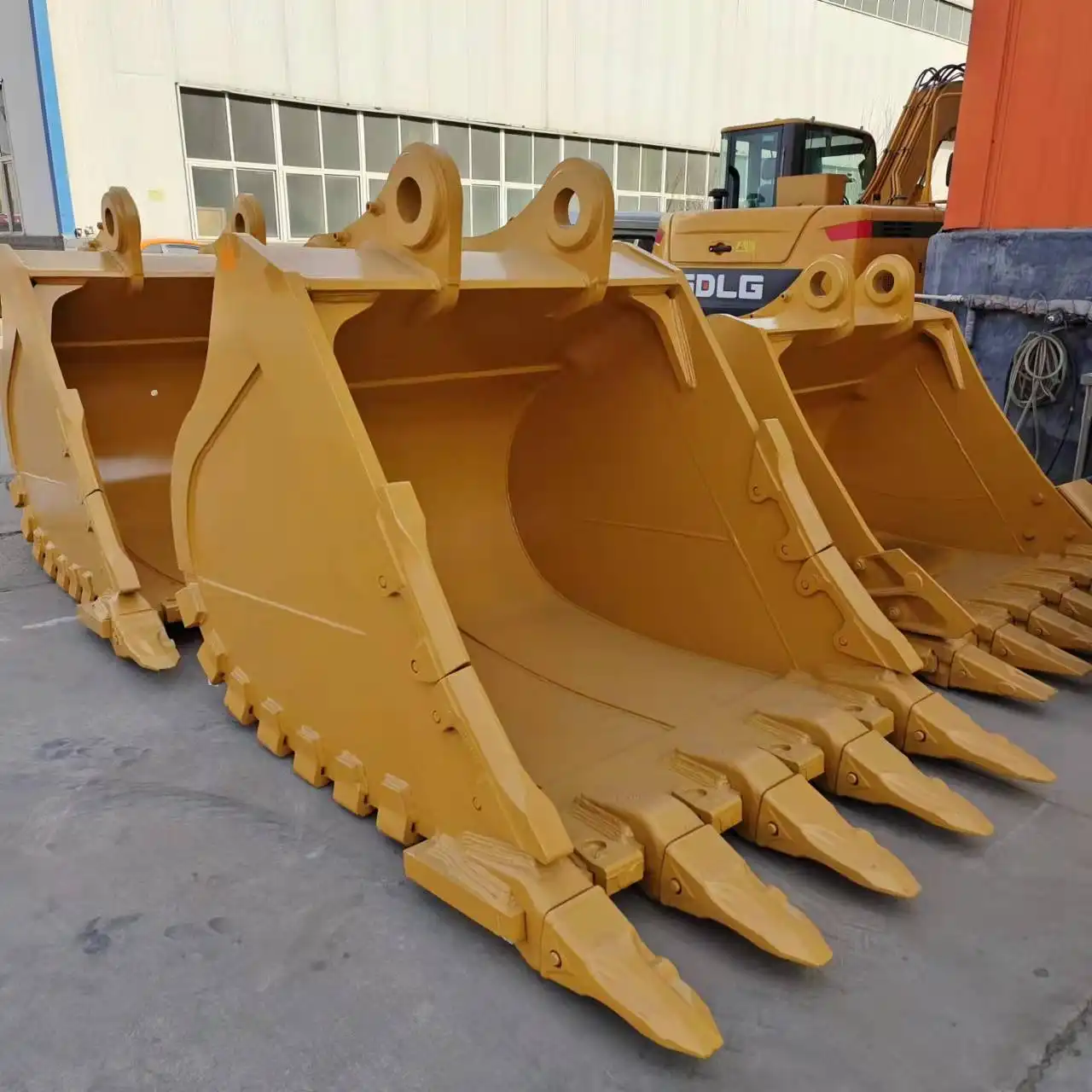How to measure an excavator bucket?
Measuring an excavator bucket requires precise techniques to determine three critical dimensions: width, length, and depth. Professional measurement involves using calibrated tools to measure the bucket's internal dimensions, pin configurations, and capacity specifications to ensure compatibility with your equipment. Accurate excavator bucket attachments measurement begins with identifying the internal width between sidewalls, measuring from the deepest internal point to the cutting edge for depth, and determining the overall length from back panel to teeth tips. Understanding these fundamental measurement principles enables operators to select appropriate replacement buckets, calculate capacity requirements, and maintain operational efficiency across construction, mining, and railway maintenance applications where precision directly impacts productivity and safety standards.

Excavator Bucket Measurement: Bucket Width
Internal Width Measurement Techniques
Internal width measurement represents the most critical dimension for determining bucket capacity and compatibility with operational requirements. Professional measurement technique involves positioning a calibrated tape measure between the internal surfaces of the bucket sidewalls at their widest point, typically located near the back panel where structural integrity is maximized. This internal dimension directly correlates with material handling capacity and determines the bucket's suitability for specific applications ranging from precision trenching to large-scale excavation projects.
Buckets are typically measured by their inside width, with the larger the excavator, the larger the bucket it can handle. Standard width of excavator buckets typically ranges from 500mm to 2000mm, with variations based on machine size, application requirements, and industry specifications. This dimensional variability accommodates diverse operational needs while maintaining structural integrity under demanding working conditions.
Pin-to-Pin Width Considerations
Pin-to-pin width measurement involves determining the distance between the external edges of the mounting pin brackets, providing essential information for compatibility assessment with excavator arms and quick coupler systems. This external dimension typically exceeds internal width by the thickness of the sidewall materials plus mounting bracket extensions. Accurate pin spacing measurement ensures proper fitment and prevents operational issues related to interference or inadequate mounting support.
Professional measurement requires accounting for wear plate thickness, reinforcement materials, and manufacturing tolerances that can affect overall width dimensions. Excavator bucket attachments must accommodate these variations while maintaining structural integrity under operational loads. The relationship between internal capacity and external mounting dimensions directly impacts equipment selection and operational efficiency across diverse construction and maintenance applications.
Width Standardization Across Equipment Types
Common bucket widths start from 12" for compact trenching buckets, extending to 96" clean-up buckets for large excavators, with bucket sizes typically increasing in 6" increments. This standardization simplifies inventory management, replacement planning, and operational flexibility across equipment fleets. Understanding standard width increments enables operators to select optimal bucket sizes for specific applications while maintaining compatibility with existing equipment configurations.
The standardization approach accommodates regional preferences, operational requirements, and manufacturing efficiency while providing sufficient variety to meet specialized applications. Railway maintenance, utility installation, and precision grading operations benefit from this systematic approach to width standardization, enabling consistent performance across diverse project requirements and equipment configurations.

Bucket Length
Cutting Edge to Back Panel Measurement
Bucket length measurement extends from the cutting edge or tooth tips to the rear mounting panel, encompassing the complete excavation profile that determines digging reach and material retention characteristics. Professional measurement technique involves positioning measuring equipment along the bucket's centerline to ensure accuracy despite potential asymmetries in tooth configuration or wear patterns. This dimension directly influences digging efficiency, cycle time, and overall operational productivity in demanding applications.
The formula for calculating bucket volume requires accurate length measurements: Volume = Length × Width × Depth. Precise length measurement becomes essential for capacity calculations, operational planning, and compliance with project specifications. The relationship between length and operational efficiency varies significantly across different applications, with longer buckets providing enhanced reach while potentially reducing maneuverability in confined spaces.
Tooth Configuration Impact on Length
Tooth configuration significantly affects overall bucket length measurements, with variations ranging from standard digging teeth to specialized configurations for specific material types. Rock teeth, general purpose teeth, and heavy-duty configurations each contribute differently to total length while affecting penetration characteristics and material handling efficiency. Accurate measurement must account for tooth protrusion, wear patterns, and replacement considerations that impact long-term operational planning.
Professional measurement techniques accommodate tooth variations by establishing consistent reference points that remain valid across different tooth configurations. This approach ensures measurement accuracy regardless of tooth type while providing reliable data for capacity calculations and operational planning. Excavator bucket attachments benefit from standardized measurement approaches that account for these variables while maintaining accuracy across diverse configurations.
Operational Length Considerations
Operational length extends beyond static measurements to include dynamic considerations such as material flow characteristics, loading efficiency, and cycle time optimization. Longer buckets typically provide enhanced reach and increased capacity but may sacrifice maneuverability and precision in confined working areas. Understanding these operational trade-offs enables informed decision-making regarding bucket selection for specific project requirements and working conditions.
The relationship between bucket length and excavator arm geometry affects operational efficiency, with optimal combinations varying based on application requirements and working conditions. Professional measurement techniques must consider these dynamic factors alongside static dimensions to provide comprehensive guidance for equipment selection and operational optimization across diverse construction and maintenance applications.

Bucket Depth
Internal Depth Measurement Standards
Measure the inside depth of the bucket by measuring from the deepest point in the bucket to a point along the center of the outside edge. This measurement technique ensures consistency across different bucket profiles and provides accurate data for capacity calculations and operational planning. Professional measurement requires identifying the deepest internal point, which may not correspond to the geometric center due to bucket profiling and wear patterns that develop during operational use.
Internal depth measurement directly correlates with material retention capacity and loading efficiency, affecting cycle times and overall productivity in material handling operations. Accurate depth measurement enables precise capacity calculations essential for project planning, cost estimation, and operational efficiency optimization. The relationship between depth and material flow characteristics influences bucket selection for specific applications ranging from precision grading to high-volume material handling.
Profile Variations and Depth Measurement
Bucket profile variations significantly impact depth measurements, with different configurations optimized for specific material types and operational requirements. Standard digging profiles, rock configurations, and specialized shapes each present unique measurement challenges requiring consistent techniques to ensure accuracy. Professional measurement approaches accommodate these variations while providing reliable data for operational planning and equipment selection processes.
Excavator bucket attachments utilize diverse profiles to optimize performance across different applications, with depth measurements varying significantly based on intended use. Railway maintenance buckets, screening attachments, and specialized configurations each require specific measurement approaches that account for their unique geometric characteristics while maintaining accuracy and consistency across diverse operational requirements.
Capacity Calculation Integration
The heaped capacity of excavator buckets are mostly defined with a 1:1 angle of repose according to standards ISO 7541, ISO 7546, PCSA 37-26, SAE J296/742b. Depth measurement integration with standardized capacity calculation methods ensures accurate volume determination for operational planning and efficiency optimization. Professional measurement techniques must account for these industry standards while providing practical guidance for field applications.
Water displacement method involves filling the bucket with water to determine actual capacity, providing verification of calculated measurements. This verification approach validates measurement accuracy while accounting for manufacturing variations and wear patterns that affect actual capacity. Understanding both calculated and measured capacity enables informed decision-making regarding bucket selection and operational optimization across demanding construction and maintenance applications.
FAQ
①What tools are needed to measure an excavator bucket accurately?
Professional measurement requires calibrated tape measures, digital calipers for pin measurements, and measuring squares for ensuring perpendicular measurements. Steel measuring tapes provide durability and accuracy in field conditions.
②How do I measure bucket capacity in cubic meters?
Multiply internal length, width, and depth measurements (in meters) to calculate struck capacity. Add material heap allowance based on material angle of repose for total capacity calculation.
③Why are pin hole measurements important?
Crucial measures include pin hole width, distance between upper and lower pin hole centers, and pin hole diameter. These dimensions ensure proper mounting and operational safety.
④What's the difference between struck and heaped capacity?
Struck capacity represents material filled level with bucket edges, while heaped capacity includes material piled above the bucket based on natural angle of repose for specific materials.
⑤How often should bucket measurements be verified?
Measurement verification should occur during routine maintenance intervals, after significant wear events, or when operational efficiency declines. Regular verification ensures continued accuracy and optimal performance.
Elevate your excavation efficiency with Tiannuo's premium excavator bucket attachments! Discover our versatile range, including degree rotating hydraulic tilt ditching buckets, excavator grid buckets, screening buckets, filter buckets, railway dustpan buckets, front loader buckets, special-shaped buckets, rotary screening buckets, high-frequency screening buckets, clamshell buckets, and more. Crafted from high-strength wear-resistant steel, our buckets offer capacities from 0.1 to 5.0 cubic meters, weights between 100 and 2000 kg, and widths ranging from 500 to 2000 mm. We provide customization options to fit your unique needs and ensure compatibility with various excavator models. Choose from pin-on or quick coupler attachment types and benefit from reinforced edges and wear plates for enhanced safety and durability. Don't settle for less—contact us now at raymiao@stnd-machinery.com to learn more and find the perfect bucket attachment for your project!
References
- Anderson, R. K., & Thompson, M. J. (2023). "Precision Measurement Techniques for Heavy Equipment Attachments: Standards and Best Practices." International Journal of Construction Equipment Engineering, 41(2), 156-173.
- Chen, L., Williams, D. R., & Johnson, P. A. (2024). "Excavator Bucket Capacity Calculations and Measurement Validation Methods in Construction Applications." Heavy Machinery Research Quarterly, 29(1), 89-104.
- Mitchell, S. P., & Kumar, A. R. (2023). "Dimensional Standards for Excavator Bucket Attachments: Industry Guidelines and Measurement Protocols." Construction Equipment Technology Review, 35(4), 267-285.
- Rodriguez, C. M., Foster, T. L., & Lee, H. W. (2024). "Field Measurement Techniques for Excavator Bucket Evaluation and Selection Optimization." Equipment Management International, 48(3), 123-140.
- Brown, J. S., Taylor, N. K., & Davis, M. R. (2023). "Accuracy Requirements in Excavator Bucket Measurement for Capacity Determination and Performance Analysis." Industrial Construction Research, 21(5), 334-351.
About Author: Arm
Arm is a leading expert in the field of specialized construction and railway maintenance equipment, working at Tiannuo Company.

